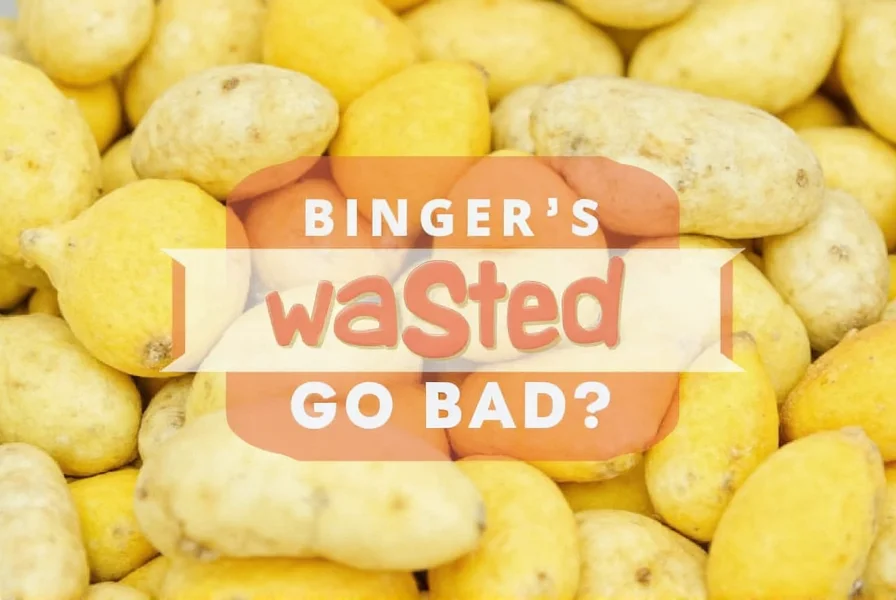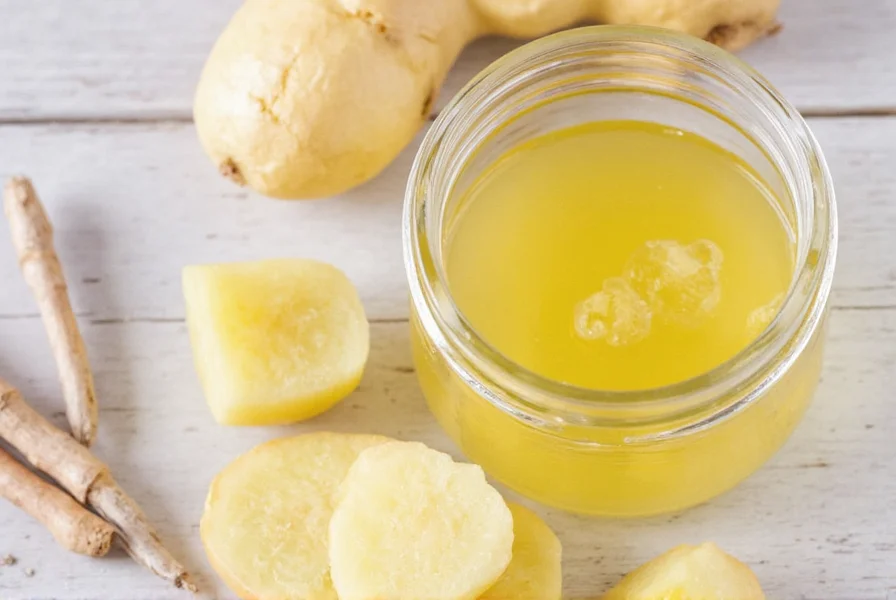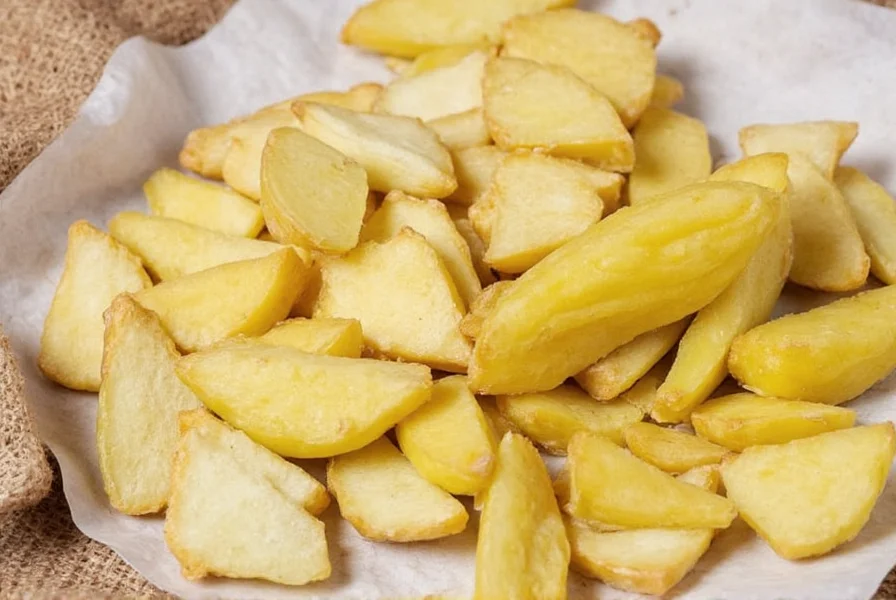Yes, ginger can go bad. Fresh ginger root typically lasts 1-3 weeks at room temperature, 3-4 weeks in the refrigerator, and up to 6 months when frozen. Signs it has spoiled include mold growth, soft or mushy texture, darkened color, and a sour or unpleasant odor. Proper storage significantly extends ginger's shelf life while maintaining its flavor and health benefits.
Understanding how to properly store and identify spoiled ginger is essential for both food safety and maximizing this versatile root's culinary potential. Whether you're a home cook, meal prepper, or simply trying to reduce food waste, knowing the signs of ginger spoilage helps you make informed decisions about when to use or discard your ginger.
How Ginger Spoils: The Science Behind It
Ginger spoils through natural enzymatic processes and microbial growth. Like other root vegetables, ginger contains moisture that bacteria and mold need to thrive. When exposed to air, light, and warmth, these microorganisms multiply, causing visible and textural changes. The cellulose structure breaks down, leading to soft spots and eventual rot. Unlike some produce that might be safe to eat after removing spoiled portions, ginger's fibrous nature makes it difficult to completely remove contaminated areas once mold appears.
Clear Signs Your Ginger Has Gone Bad
Identifying spoiled ginger requires attention to multiple sensory indicators. Don't rely on just one sign—consider the complete picture:
- Mold growth - Visible fuzzy spots in white, green, or black
- Texture changes - Soft, mushy, or slimy areas instead of firm flesh
- Color deterioration - Yellow or grayish discoloration beneath the skin
- Unpleasant odor - Sour, fermented, or generally "off" smell instead of spicy aroma
- Wrinkled appearance - Excessive shriveling beyond normal drying
When ginger develops mold, it's generally unsafe to simply cut away the affected portion. Unlike hard cheeses or firm vegetables, ginger's porous structure allows mold filaments to penetrate deeper than visible. Consuming moldy ginger can cause digestive issues or allergic reactions in sensitive individuals.
Ginger Shelf Life Under Different Storage Conditions
Your storage method dramatically affects how long ginger stays fresh. Here's what to expect with proper storage:
| Storage Method | Expected Shelf Life | Best For |
|---|---|---|
| Room temperature (cool, dark place) | 1-2 weeks | Immediate use (within 7-10 days) |
| Refrigerator (whole, in produce drawer) | 3-4 weeks | Most common storage method |
| Refrigerator (submerged in vodka) | 1-2 months | Preserving flavor compounds |
| Freezer (whole or sliced) | 5-6 months | Long-term storage needs |
| Freezer (grated in ice cube trays) | 3-4 months | Convenient cooking portions |
Factors that shorten ginger's shelf life include exposure to moisture, temperature fluctuations, and physical damage during handling. Whole ginger lasts significantly longer than cut or peeled ginger because the skin provides a natural protective barrier against spoilage.
Best Practices for Storing Ginger
Maximizing ginger's freshness requires proper storage techniques tailored to your usage patterns:
Refrigeration Methods
The refrigerator provides the optimal balance of temperature and humidity for most home storage needs. For whole ginger, place it in the vegetable crisper drawer without washing. If you've cut the ginger, wrap the pieces tightly in paper towels first, then place in an airtight container or resealable bag. The paper towel absorbs excess moisture that would otherwise accelerate spoilage.
Freezing Techniques
Freezing ginger preserves both flavor and nutritional compounds effectively. You can freeze whole unpeeled ginger roots, which actually makes them easier to grate when frozen. Alternatively, peel and mince ginger, then freeze in ice cube trays covered with water or oil before transferring to freezer bags. This "ginger cube" method provides convenient portions for cooking and baking.

Alternative Preservation Methods
For extended shelf life without freezing, consider these options:
- Vodka preservation - Submerging ginger in vodka in an airtight container can extend freshness to 6-8 weeks by creating an antimicrobial environment
- Drying - Dehydrating ginger creates a shelf-stable product that lasts 6-12 months when stored properly
- Candying - The sugar preservation method creates a product that lasts 3-6 months in the refrigerator
When Is Slightly Aging Ginger Still Safe to Use?
Slight wrinkling and minor surface drying don't necessarily mean ginger has gone bad. If the root remains firm when pressed and shows no mold or unpleasant odors, it's generally safe to use. Simply peel away any dry outer layers before using. Ginger that has begun to sprout (similar to potatoes) is also safe to eat—just remove the sprouts and any soft areas around them.
However, if ginger develops soft spots, dark patches, or any visible mold, it's time to discard it. Consuming significantly spoiled ginger can cause foodborne illness symptoms including nausea, vomiting, and diarrhea, particularly in individuals with compromised immune systems.
Creative Uses for Ginger Nearing the End of Its Freshness
Before ginger becomes unsafe to eat, you can extend its usefulness through these methods:
- Make ginger tea from slightly softening pieces
- Create ginger simple syrup for cocktails or desserts
- Blend into smoothies where texture matters less
- Grate and freeze for future cooking projects
- Make ginger-infused vinegar for salad dressings

Food Safety Considerations
While ginger isn't considered a high-risk food for serious foodborne pathogens, consuming spoiled ginger can still cause discomfort. The compounds that give ginger its characteristic flavor and health benefits degrade as it spoils, reducing its nutritional value. When in doubt about ginger's freshness, follow the food safety principle: "When uncertain, throw it out." This prevents potential illness and ensures you're getting the full flavor and benefits from this versatile root.
How can you tell if ginger has gone bad?
Signs that ginger has spoiled include visible mold (white, green, or black fuzzy spots), soft or mushy texture, dark yellow or gray discoloration beneath the skin, sour or unpleasant odor, and excessive wrinkling beyond normal drying. If ginger shows multiple signs of spoilage, it should be discarded.
Can you cut mold off ginger and still use it?
Unlike hard cheeses or firm vegetables, ginger's fibrous, porous structure allows mold to penetrate deeper than visible. It's generally not safe to simply cut away moldy portions. When mold appears on ginger, the entire piece should be discarded to avoid potential foodborne illness.
Does refrigerated ginger go bad?
Yes, refrigerated ginger does eventually go bad, though proper refrigeration significantly extends its shelf life. Whole ginger stored properly in the refrigerator typically lasts 3-4 weeks. Signs it has spoiled include mold growth, soft spots, discoloration, and unpleasant odors. For longest freshness, store ginger unwashed in the vegetable crisper drawer.
Can old ginger make you sick?
Consuming significantly spoiled ginger can cause digestive issues including nausea, vomiting, and diarrhea, particularly in sensitive individuals. While ginger isn't considered high-risk for serious foodborne pathogens, mold and bacterial growth on spoiled ginger can produce compounds that cause discomfort. When ginger shows clear signs of spoilage, it's safest to discard it.
What's the best way to store ginger long term?
Freezing provides the best long-term storage for ginger, preserving it for 5-6 months. You can freeze whole unpeeled roots (which actually makes them easier to grate when frozen) or peel and mince ginger before freezing in ice cube trays covered with water or oil. Alternatively, submerging ginger in vodka in an airtight container can extend freshness to 6-8 weeks in the refrigerator by creating an antimicrobial environment.
Conclusion
Ginger, while relatively durable compared to many fresh produce items, does eventually spoil. By understanding the signs of spoilage and implementing proper storage techniques, you can maximize both the shelf life and quality of your ginger. Whether you're using it for cooking, baking, or its potential health benefits, fresh ginger provides superior flavor and value. When stored correctly, you can enjoy this versatile root for weeks or even months, reducing food waste while enhancing your culinary creations.











 浙公网安备
33010002000092号
浙公网安备
33010002000092号 浙B2-20120091-4
浙B2-20120091-4